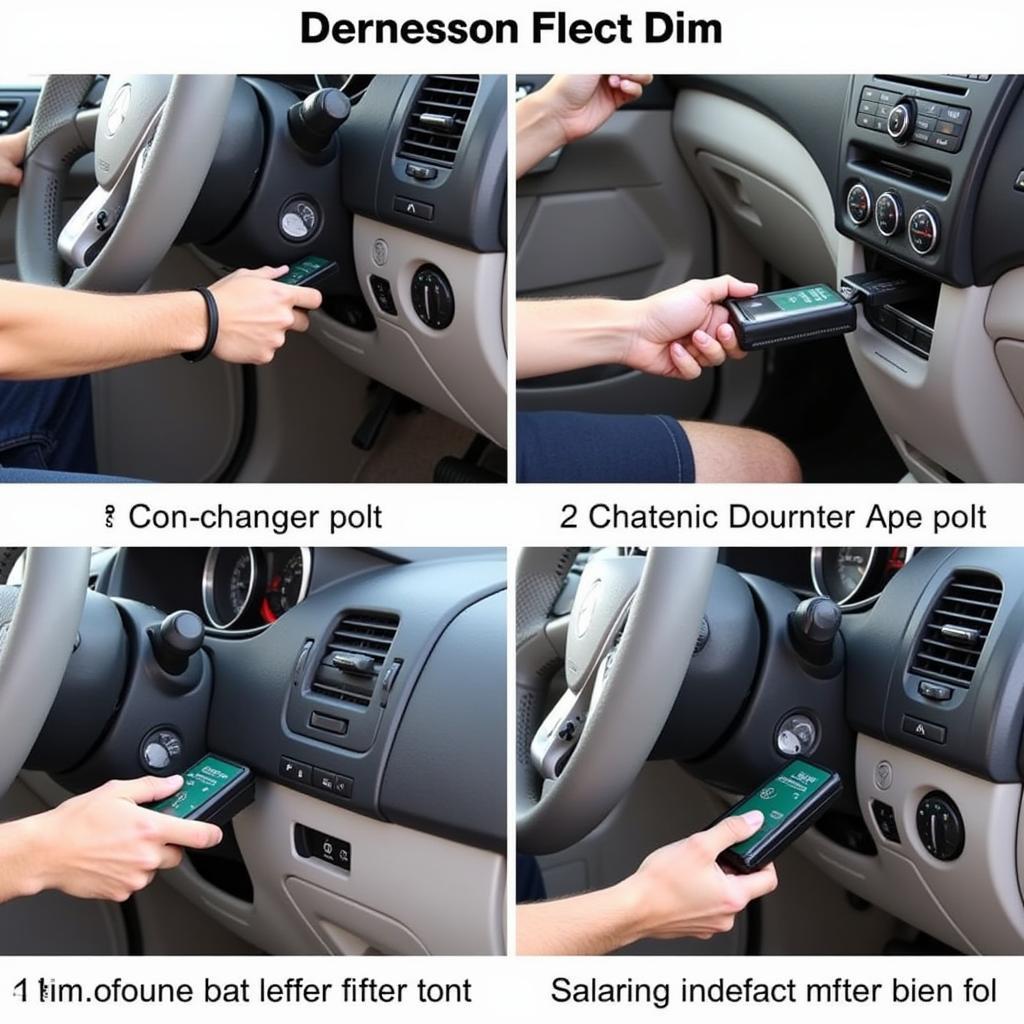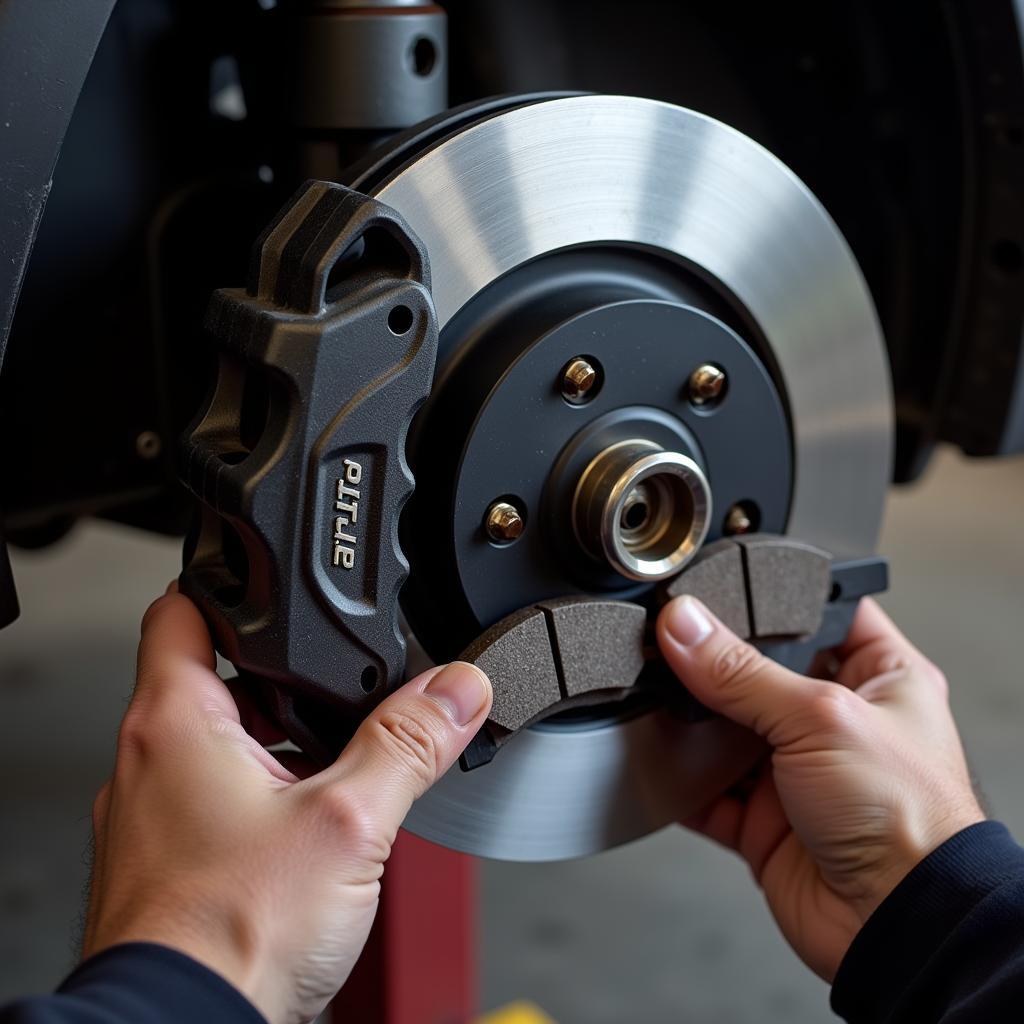The Vito brake pad warning light is a crucial safety feature that alerts you when your brake pads need replacing. Ignoring this warning can lead to reduced braking efficiency and potential safety hazards. While physically replacing the brake pads is essential, you may also need to reset the warning light yourself. This comprehensive guide will walk you through the steps of resetting the Vito brake pad warning light and address common questions related to this issue.
Understanding the Vito Brake Pad Warning Light
The brake pad warning light, often depicted as a circle enclosed by parentheses with an exclamation mark (!) in the center, illuminates on your dashboard when the brake pad sensor detects wear beyond a certain threshold. This sensor, usually a thin wire embedded within the brake pad material, completes a circuit and triggers the warning light when the pad wears down and exposes the wire.
Why You Should Never Ignore the Warning Light
Driving with worn-out brake pads compromises your safety and others on the road. Here’s why:
- Reduced Braking Distance: Worn brake pads need a larger surface area to contact the brake rotor, increasing the time and distance required to stop the vehicle.
- Damage to Brake Rotors: Driving with worn pads can cause the metal backing plate to scrape against the rotors, leading to costly repairs or replacements.
- Brake Failure: In extreme cases, ignoring the warning light can lead to complete brake failure, posing a severe safety risk.
Common Causes of a Vito Brake Pad Warning Light
While worn brake pads are the primary cause, other factors can trigger the warning light:
- Faulty Brake Pad Sensor: A damaged or disconnected sensor can send a false signal, illuminating the warning light even with sufficient pad thickness.
- Wiring Issues: Damaged or corroded wiring within the brake system can disrupt the sensor signal.
- Malfunctioning Instrument Cluster: In rare instances, a problem with the instrument cluster itself might trigger the warning light erroneously.
Tools You’ll Need to Reset the Vito Brake Pad Warning Light
Before you begin the reset procedure, gather these tools:
- OBD-II Scanner: A scan tool compatible with your Vito’s model year.
- Protective Gloves: To prevent injuries while working around the brake system.
Step-by-Step Guide to Resetting the Vito Brake Pad Warning Light
Follow these instructions carefully to reset the warning light after replacing your brake pads:
- Connect the OBD-II Scanner: Plug the scanner into the OBD-II port located under the dashboard on the driver’s side.
- Turn on the Ignition: Switch the ignition to the “on” position without starting the engine.
- Access the Brake System Module: Navigate through the scanner’s menu to access the “Brake System Module” or similar, depending on the scanner model.
- Select “Reset Brake Pad Warning Light”: Choose the option to reset the brake pad warning light.
- Follow On-Screen Instructions: The scanner will guide you through the remaining steps, which typically involve confirming the reset and clearing any stored error codes.
 OBD-II Scanner Connection to Vito
OBD-II Scanner Connection to Vito
What if the Warning Light Stays On?
If the warning light persists after replacing the pads and performing the reset, it indicates a potential issue that requires further diagnosis:
- Double-Check Sensor Installation: Ensure the new brake pads are equipped with sensors and are correctly installed.
- Inspect Wiring and Connections: Examine the brake pad sensor wires for any signs of damage, loose connections, or corrosion.
- Consult a Qualified Mechanic: If you cannot identify the problem, consult a qualified mechanic specializing in Mercedes-Benz vehicles to diagnose and address the underlying issue.
Vito Brake Pad Warning Light Reset: Frequently Asked Questions
Q1: Can I reset the warning light without replacing the brake pads?
A: While technically possible, resetting the light without addressing worn brake pads is strongly discouraged. It compromises safety and might lead to more severe problems.
Q2: How often should I replace my Vito’s brake pads?
A: Brake pad lifespan varies depending on driving habits and conditions. As a general guideline, inspect your brake pads every 10,000 to 15,000 miles and replace them if they appear worn.
Q3: Do I need specialized tools to replace the brake pads myself?
A: Replacing brake pads requires some mechanical expertise and specific tools. If you’re uncomfortable working on your vehicle, it’s recommended to have a professional handle the replacement.
Q4: Can I drive my Vito with the brake pad warning light on?
A: While you might be able to drive a short distance, driving with the warning light on is unsafe and potentially dangerous. Have your brakes inspected and repaired as soon as possible.
“Driving with worn brake pads is like playing with fire,” cautions Michael Schmidt, a certified Mercedes-Benz technician with over 20 years of experience. “You might think you have it under control, but the consequences can be severe.”
Q5: How can I prevent premature brake pad wear?
A: Adopting smoother driving habits, such as avoiding harsh braking and anticipating stops, can significantly extend the life of your brake pads.
Conclusion
The Vito brake pad warning light serves as your first line of defense for maintaining optimal braking performance. While resetting the light after replacing your brake pads is a relatively straightforward process, it’s crucial to understand the underlying reasons behind its illumination. Regularly inspecting your brake system, addressing any issues promptly, and adopting preventative driving habits will ensure your safety on the road.


